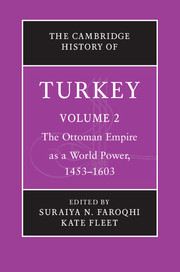Book contents
- Frontmatter
- Contents
- List of Illustrations
- List of Maps
- List of Contributors
- Chronology
- A note on transliteration
- Maps
- 1 Introduction
- Part I An Expanding Empire
- Part II Government, Economic Life and Society
- Part III Culture and the Arts
- 12 The order of knowledge, the knowledge of order
- 13 The visual arts
- 14 The literature of Rum
- Glossary
- Bibliography
- Index
- References
12 - The order of knowledge, the knowledge of order
Intellectual life
from Part III - Culture and the Arts
Published online by Cambridge University Press: 05 July 2013
- Frontmatter
- Contents
- List of Illustrations
- List of Maps
- List of Contributors
- Chronology
- A note on transliteration
- Maps
- 1 Introduction
- Part I An Expanding Empire
- Part II Government, Economic Life and Society
- Part III Culture and the Arts
- 12 The order of knowledge, the knowledge of order
- 13 The visual arts
- 14 The literature of Rum
- Glossary
- Bibliography
- Index
- References
Summary
In a list of the “diseases of the soul”, the philosopher Kınalızade Ali (d. 1572) lists, together with all other vices, two kinds of ignorance: simple ignorance (cehl-i basit), which is ignorance aware of its ignorance, and complex ignorance (cehl-i mürekkeb). Since cognizance of ignorance is the beginning of every quest for knowledge, simple ignorance is not even reprehensible initially. It can be healed by recognising the unique position of human beings among all animals, distinct through the gift of speech – and thus capable of preserving and transmitting knowledge. The other kind of ignorance, however, is not even to be cured by Jesus, who can heal the deaf and the blind. When encountering such a person, the only cure a wise man may undertake is to teach him mathematics, so as to awaken in him the desire for definite proof, and then lead him on to other knowledge to which he will apply himself with the same desire.
This passage demonstrates the value that sixteenth-century Ottoman society placed on knowledge, also hinting at the way in which people acquire it and alluding to the instrumental relations between different kinds of knowledge. After scattered and heterogeneous beginnings in the pre-imperial period, between the conquest of Constantinople and the late 1500s, a new, coherent system of knowledge production and dissemination came into being in the Ottoman Empire. Around 1600, towards the end of the period under consideration, we encounter a well-established canon of knowledge which has fully appropriated the classical Islamic tradition and expanded on it. This Ottoman canon of knowledge fully deserves to be called classical in itself, as it has attained systematic organisation and internal ordering while at the same time imposing order onto its subject matter.
- Type
- Chapter
- Information
- The Cambridge History of Turkey , pp. 407 - 456Publisher: Cambridge University PressPrint publication year: 2012
References
- 1
- Cited by

